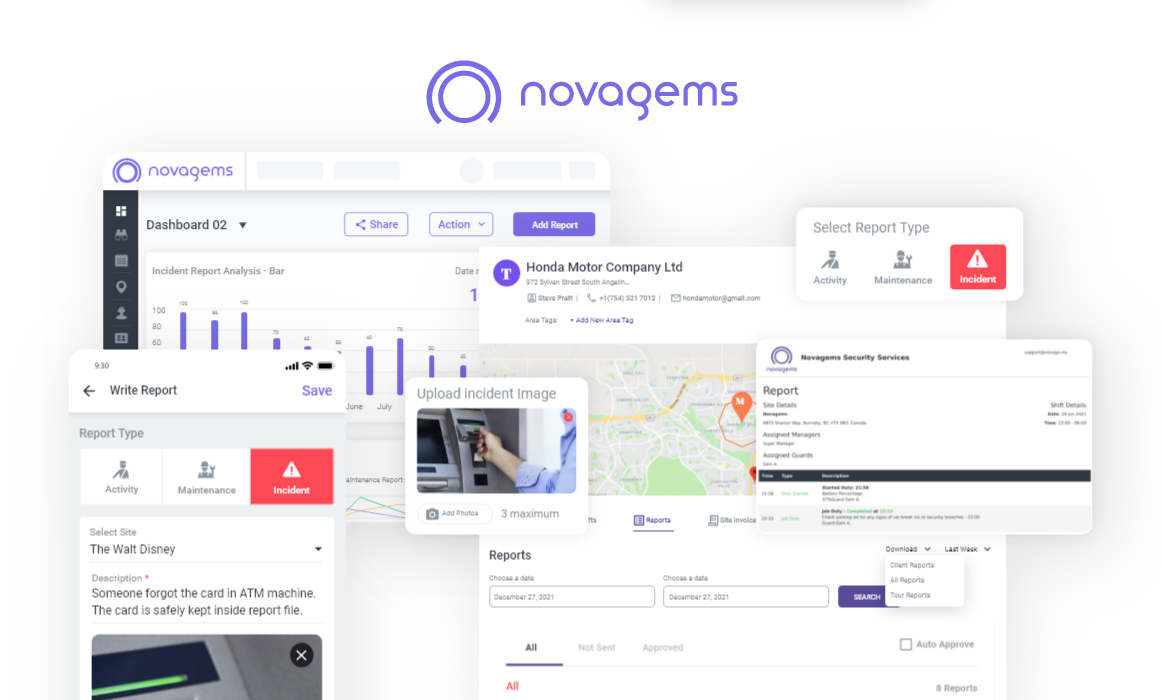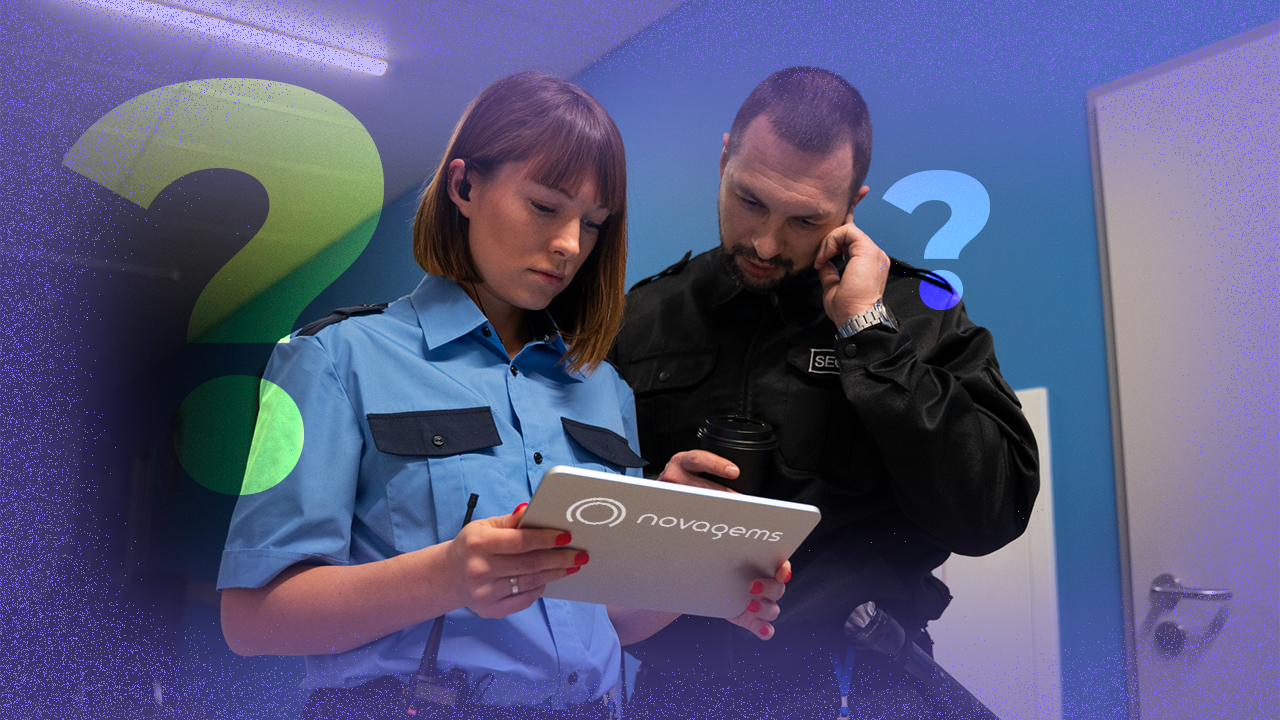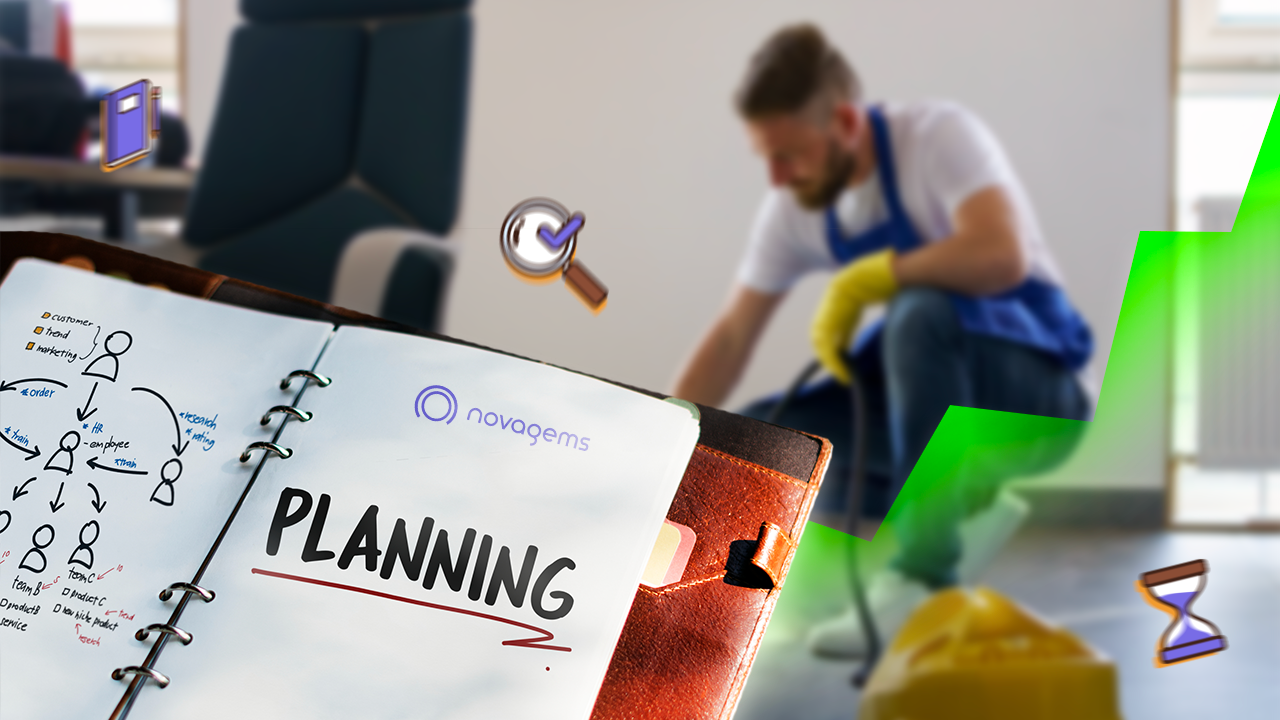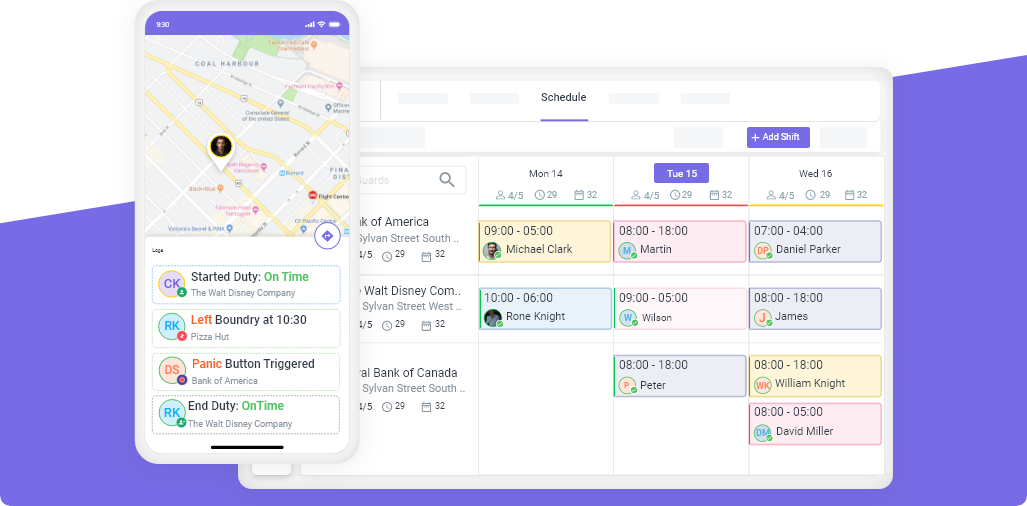Tips for Security Professionals: Building Bulletproof Incident Reporting
Mon, Sep 26, 2022
Read in 7 minutes

While the job of a security officer includes both avoidable and unavoidable risks, they must be well-versed with incident reporting. Incidents are bound to happen, but how a security professional reports them is of utmost importance.
A security guard’s incident report plays a crucial role in documenting events and is often used for investigations or legal matters. A well-crafted report provides accurate, detailed, and objective information, which helps ensure clarity and transparency. Follow these tips to create a reliable and professional incident report if you are not looking for an incident report example for security guards. These tips will help you make a unique report of your own and not rely on anyone else.
Here, we will help you learn how you can create bulletproof incident reports. So, let’s check out some primitive elements of an incident report:
Location
An incident report states the happening of an event. So, the first question that comes to mind is, where did it happen? So, our first point in an incident report is the location.
You can either plainly write the name of the location or add a checklist mentioning all the areas and check the one where the incident took place. For example, if the guard is on duty in a commercial building and an incident happens, he can add the location as The Reception Area.
Alternatively, he can add the names of all areas like the reception area, first-floor washrooms, second-floor washrooms, conference hall, etc., as a checklist. He can then check the location where the incident took place. This way, security incident reporting will be more elaborative and presentable and can be reused.
Type of Incident
Next, you need to mention the type of incident. In this section, you need to name the incident. You can write the incident briefly, like the security guard was injured or the door was open. You can follow it by explaining the incident in a few more words.
However, a more effective way to mention the type of incident is again creating a checklist and categorizing the events. For example, you can write the categories of events like Intrusion, Injury, Maintenance, Security Breach, etc. Then you can check the type of incident that happened. Such types of bulletproof incident reports are versatile and reusable.
Details of The Damage
Now, you need to enter the details of the damage. Was there any visible damage? What are the intricacies of the visible damage? What are the reasons behind the damage?
Here, you cannot write an entire paragraph. Keep it short, precise, and informational. Explain the damage in simple and short sentences.
You can also add the details about what led to the damage and how things unfolded during the incident. Short phrases will help you explain the situation professionally through accurate security incident reporting.
Action Taken
Lastly, state the action you took as the security guard on duty. Explain what you did to fix or undo the damage. What action did you take? Did you notify the police when required? Did you talk to the police if they arrived at the location? Did you take preventive measures to prevent further damage or loss?
Again, be precise about your answer to this point. Keep it professional but don’t miss out on crucial information. In the free-form template, you can write it in simple sentences. However, in a template-based report, create a different section for commonly taken actions like Did you Notify the Police? Keep both answers in options - Yes and No. The security guard can check one of the answers depending on the incident and situation.
Be Clear, Concise, and Objective
Your incident report must be free of bias, opinions, or assumptions. Write only what you witnessed or have factual information about. The report should be easy to understand for anyone who reads it, whether they were at the scene or not. Always avoid using technical jargon or complicated language.
Key Information to Include:
- Time and date of the incident
- The exact location where the incident occurred
- Names of individuals involved and witnesses
- A step-by-step account of what happened
For example, instead of writing “The suspect looked suspicious,” describe their actions, such as “The suspect was observed loitering near the entrance, repeatedly looking around and pacing.”
Include Pertinent Details
Effective incident reports capture all relevant details, helping readers fully understand the situation. Use the 5 Ws and 1 H approach to guide your writing:
- Who: Who was involved?
- What: What exactly happened?
- When: The time and date of the event.
- Where: Specific location.
- Why: If known, explain the reason for the incident.
- How: Describe how the event unfolded.
Including these details ensures that the report is comprehensive and covers all necessary aspects of the incident. It is quite easy to forget all these pointers if you are new in the security industry. That is why there are many security guard incident report templates available that you can use. You can find those templates in a security reporting software too where templates are already pre-loaded.
Ensure Grammar and Spelling Accuracy
A professional security officer incident report should be free of grammar and spelling errors. Even small mistakes can undermine the credibility of the document and make the report harder to read. Always proofread your report before submitting it. If your report contains errors, it may reflect poorly on you and your company and might even compromise legal outcomes if the report is used in court.
Be Accurate with Names, Dates, and Places
Always double-check that names, dates, and locations are correct. Mistakes in these areas can cause confusion and weaken the report’s reliability. Write full names and roles for everyone involved, including witnesses, suspects, and responding officers.
- Example:
Incorrect: “The man in the blue shirt approached the guard.”
Correct: “John Doe, wearing a blue shirt, approached Security Guard Smith.”
Being specific adds precision and helps avoid misinterpretation.
Use the Proper Format and Structure
Most companies have a specific format for incident reports. Always follow this format to ensure consistency. Common elements in an incident report include:
- Title/Heading: A brief description of the report, e.g., “Incident Report: Theft at Building A.”
- Introduction: Summarize the event in one or two sentences.
- Body: Provide a detailed account using the 5 Ws and 1 H.
- Conclusion: State any follow-up actions taken or needed, such as notifying authorities or securing the area.
Many security companies use templates to make the report-writing process easier and more standardized. Using these templates ensures that you don’t leave out key details.
Keep a Log of All Security Guard Reports
Maintaining a log of all security guard reports is essential for effective incident reporting. By keeping a detailed record of all incidents, actions taken, and patrols, security teams can:
- Track Patterns: Identify recurring issues or vulnerabilities on the premises.
- Ensure Accountability: Demonstrate that guards are following procedures.
- Support Investigations: Provide accurate, documented evidence for internal reviews or legal cases.
- Improve Future Protocols: Use past incidents to refine and enhance security procedures.
This practice ensures that all incidents are properly documented and accessible for future reference.
Attach Supporting Evidence
When available, attach any supporting materials to your report, such as photos, video footage, or witness statements. This extra information provides visual context and can be vital for later investigations.
For example, if surveillance footage captured the event, include a link or reference in the report. If witnesses gave statements, note them in the report and attach their signed statements.
Follow Up and Keep Records
After submitting your report, follow up on any further actions required. This could involve meeting with authorities, checking security footage, or making recommendations for preventing similar incidents. Keeping a log of all reports helps track patterns and assess overall security performance.
So, here we covered the four crucial elements of an incident report. However, that is not all! There is much more than just a handful of answers required to create an incident report.
Such reports are official documents created by security companies, and the guards or managers should learn to make them perfect. To help you know all about it, we have created a thorough guide where you can learn how to build bulletproof incident reports.
Conclusion
A bulletproof security incident report is clear, detailed, and based entirely on facts. And since you have learned how to make a security report, you can make one that matches your liking. By sticking to the tips mentioned above you can create reports that serve as reliable records and tools for future investigations. Always remember, that an effective incident report could be the key to resolving a case or preventing future incidents.
From learning what an incident report is, to diving deeper into its six essential components, we have gathered all the information in one place. For more such guides and tips, keep following Novagems. We will be back with more informational pieces for you!
Get a Free Trial
Sign up For Newsletter
Latest Blog Posts
Get Started
Start being productive & grow your business
with Novagems




